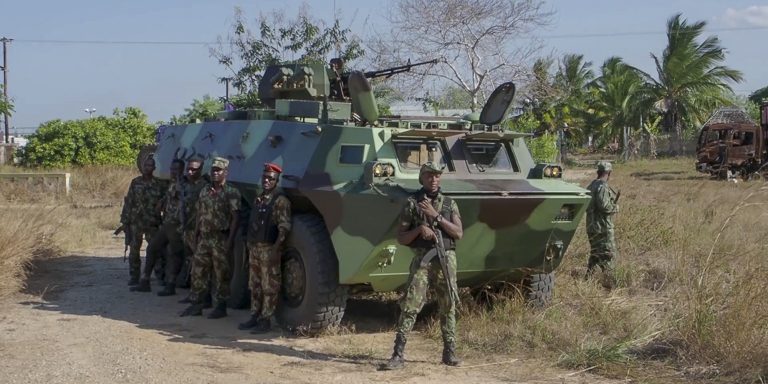INTELBRIEF
December 1, 2021
IntelBrief: The Growing Threat Posed by the Islamic State in Central Africa

Bottom Line Up Front
- Islamic State in Central Africa Province (ISCAP)’s Congo branch has become increasingly active in 2021, while its branch in Mozambique has been forced to retreat from territories captured last year.
- Like the branch in Mozambique, ISCAP in Congo has adopted the aesthetic and vernacular styles of Islamic State in Syria and Iraq, suggesting that an acculturation process to the “core” is under way.
- ISCAP’s attacks in Congo have been accompanied by a recent series of bombings in Uganda that caught the country off guard and represented the Congo branch’s first time expanding out of Congo.
- The increasing counter-terrorism activities of Rwanda in East Africa make it a possible next target for ISCAP’s Congo branch.
In 2019, Islamic State (IS) surprised the international community by declaring a new Islamic State affiliate in Central Africa Province (ISCAP), which comprised branches both in Congo and Mozambique. Although the two branches have shown little coordination with each other to date, their shared regional geography in East Africa allowed IS to group them together as one entity. The Congo-based fighters were mostly originally from the Islamist Allied Defence Forces (ADF), while the Mozambique-based fighters were originally part of a group known as al-Shabaab (unrelated to the Somali group). Both groups established connections to IS, made the pledge to its caliph in 2019, and have received some level of funding, guidance, and training from IS “core.”
Throughout most of 2020, the branch in Mozambique was the more effective of the two branches. ISCAP captured key port cities in northern Mozambique and forced the Mozambican army to retreat, while also releasing numerous video and photo reports that fueled IS propaganda. One of the notable features of ISCAP in Mozambique is its tactical improvements in combat ability. Like the Islamic State in Iraq and Syria, ISCAP sought to capture territory, but also adopted IS styles in terms of uniforms and jihadist vernacular in speeches. Despite the distance between Mozambique and IS “core” in Syria and Iraq, ISCAP in Mozambique had acculturated to the IS brand in a short time. In 2021, however, the tide has turned. ISCAP in Mozambique has lost the territories it conquered in 2020, and for a period of several months, it stopped releasing videos and photo reports to IS. This led to some speculation that it had disassociated from IS, but as it turned out, the group was on the run and focused on operations security, concerned about the security vulnerabilities of continuing to communicate with IS. Since September, Rwanda and several southern African states have also intervened by sending their soldiers to Mozambique, placed additional pressure on ISCAP in northern Mozambique. The branch has, however, managed to release occasional video and photo reports to IS while attempting to withstand the multi-national military offensive.
On the contrary, ISCAP in Congo is now on the upsurge, increasing its operational tempo of attacks. According to an IS infographic—whose details cannot be corroborated but appear to be accurate—since mid-August, the branch in Congo has carried out 39 attacks, compared with 27 attacks by the Mozambican affiliate. These attacks have predominantly targeted the Congolese army and Christian villages. Among the most notable aspects of ISCAP ‘s Congo branch in recent weeks has been their adoption of the typical black IS attire in their videos and photo reports. While this may just be an aesthetic, it reflects that, like the Mozambique branch previously, the Congo branch is now becoming acculturated to IS. There is also evidence of communications between the Congo branch and IS “core,” as seen through the IS spokesman’s claim, offering inside details about ISCAP’s prison break in Beni, Congo in October 2020, which freed 1,300 prisoners and at least several dozen fighters.
Beyond its own operations in Congo, ISCAP, or the ADF as Uganda stills call it, has recently expanded into Uganda with devastating effects. On November 16, three suicide bombers detonated explosives in the district of Kampala where government offices are located. IS’s claim in ISCAP’s name stated that Uganda is “one of the countries participating in the war against Islamic State fighters in Central Africa,” referring to its efforts against the jihadists in Congo. Uganda blamed the ADF, which originally formed in Uganda before relocating to Congo in the late 1990s and becoming ISCAP in 2019, for those suicide bombings, as well as the bombings of a post office and restaurant in October. The attacks in Uganda are significant because they represent ISCAP’s expansion into a new country from Congo, just as the branch in Mozambique had expanded into Tanzania last year. Now there are two branches of IS in East Africa with communications and logistics ties to IS “core.” Like IS’s provinces in Nigeria and Afghanistan, these two branches further the narrative of the expanding “caliphate,” despite IS’s struggles in Syria and Iraq. One might expect Rwanda to become ISCAP’s next target, because it borders Congo and Uganda and has been increasing its counter-terrorism presence in the region, including as far as Mozambique.